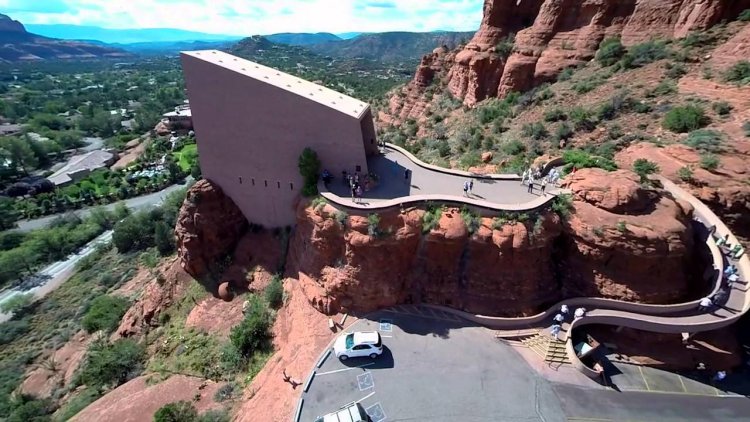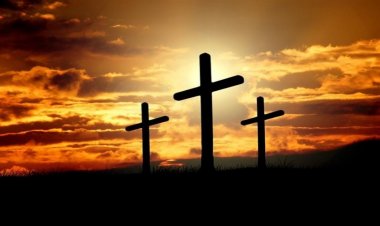THE CHAPEL WHICH WAS BUILT IN ARIZONA INSTEAD ON GELLÉRT HILL IN BUDAPEST

When driving from Phoenix Arizona, to the south rim of the Grand Canyon, the tourist passes the town of Sedona Arizona. On the left side of the highway, perched on red rocks stands a simple monumental cross shaped edifice the Chapel of the Holy Cross.

The idea for this skyscraper church originated form the sculptor Marguerite Brunswig Staude (1900-1988). She travelled extensively in Europe, studied in Switzerland and became a sculptor in the US. She studied under Frank Lloyd Wright at the famous artist colony Taliesin, Arizona.
Whilst in New York in 1932 to study art history and drawing at the Metropolitan Museum of Art, she became enraptured with the Empire State Building. At that time, this was the tallest building in the word made of reinforced concrete. This inspired the expectant mother to build a skyscraper church. When viewing the Empire State Building from a certain angle a cross appeared to run through the center of the building.
She envisioned building a church of reinforced concrete, because the tallest buildings in Europe were cathedrals.
She imagined a cross shaped religious edifice to be built on a hill most probably Gellért Hill on the Buda side of Budapest.
She gave her sketch to Llyod Wright, the son of Frank Lloyd Wright, who built the model for this church.
Marguerite’s father was a prominent pharmaceutical manufacturer, whose company is still in the top 30 of Fortune 500 companies and could finance this project.
The coming World War II. prevented the realization of this plan and instead of Buda the church was built in Arizona.
We do not know why she initially selected Buda, but its scenic geographical location influenced her imagination.
Lucian Napoleon Brunswick (1854-1943) Marguerite’s father was an Alsatian who fled France in 1971 during the Franco Prussian war. The Hungarian aristocratic family Brunszvik of Martonvásár died out in the 19th century and Mária the last of the female line left Hungary. Brunszvik is spelled in 40 different ways.

Between 1954-1956 Marguerite Brunswig Staude’s dream came true on the red rocks of Sedona in the Oak Creek Canyon of Coconino National Park, Arizona. The axis of the religious edifice remained; however, the scale was diminished and the imprint is stunning and magnificent.
In 1957 the American Institute of Architects (AIA) awarded it its grand prize.
In 2007 The citizens of Arizona chose the chapel as the one of the seven man-made wonders of the state.

Upon arrival to the top of the 460-meter-high red rock from the parking lot on a curved ramp of textured concrete the chapel comes into view. Its main feature is a 27-meter-high iron cross on the southwest wall, which is both structural and aesthetic. Inside, the cross supports the altar and the crucifix. The walls and cross are made of 0.3m reinforced concrete.
Inside and outside the walls are covered with textured concrete additives.
The chapel’s sidewalls are a smoky gray panorama glass offering stunning views of the red rocks. The floor is square concrete slab which gives the effect of grandeur and strength.

The chapel’s occupancy is 150 and is listed of the National Register of the Historic Places.
Julianna Bika

























